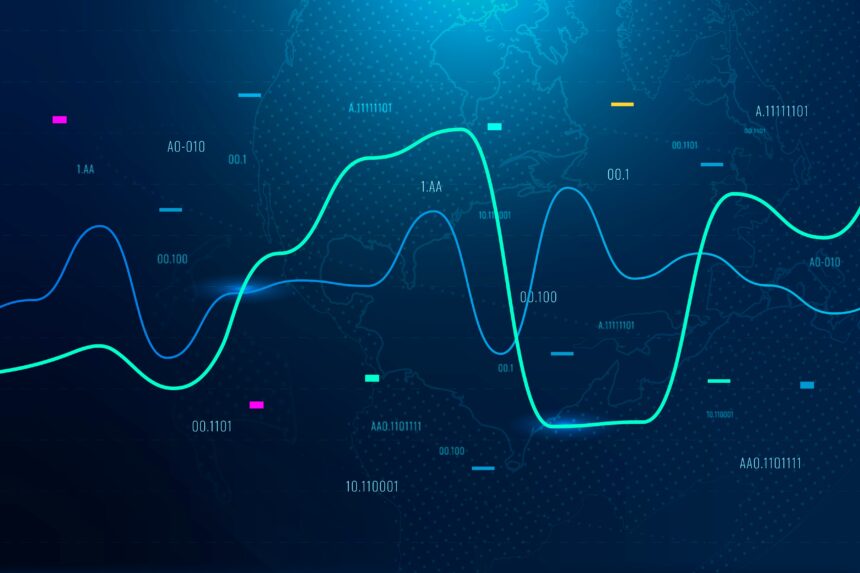Forex trading, the decentralised global marketplace for the trading of currencies, offers countless opportunities for investors and traders to profit from fluctuations in exchange rates. However, navigating the forex market can be challenging, requiring a thorough understanding of various analysis tools and strategies. One such tool that has gained popularity among traders is Fibonacci retracement, which utilises mathematical ratios to identify potential support and resistance levels in price movements. In this article, we will explore the concept of Fibonacci retracement and its application in forex trading.
The Fibonacci sequence is a mathematical sequence in which each number is the sum of the two preceding numbers: 0, 1, 1, 2, 3, 5, 8, 13, 21, and so on. The sequence has numerous mathematical properties and is found in many natural phenomena. In forex trading, the Fibonacci sequence is used in conjunction with the concept of retracement to identify potential levels where price corrections may occur within an overall trend.
Fibonacci retracement levels are horizontal lines drawn on a price chart to indicate areas of potential support or resistance during a price correction. The key ratios used in Fibonacci retracement are derived from the Fibonacci sequence and are expressed as percentages: 23.6%, 38.2%, 50%, 61.8%, and 78.6%. These levels are drawn by identifying a significant swing high and swing low in the price movement and then plotting the retracement levels based on these points.
The primary idea behind Fibonacci retracement is that after an impulsive price movement, such as a strong uptrend or downtrend, the price often retraces or corrects a portion of that movement before resuming its original trend. Traders use Fibonacci retracement levels to identify potential entry or exit points for trades, as well as areas where the price is likely to find support or encounter resistance.
When applying Fibonacci retracement in forex trading, it is essential to identify a significant swing high and swing low. A swing high is a peak in the price movement, while a swing low is a trough. These points are crucial for accurately plotting the retracement levels. Traders typically draw the Fibonacci retracement levels from the swing low to the swing high in an uptrend and vice versa in a downtrend.
The most commonly used Fibonacci retracement levels are the 38.2%, 50%, and 61.8% levels. These levels are considered significant as they represent the primary areas where price corrections often halt before resuming the overall trend. The 50% level is not derived from the Fibonacci sequence but is included due to its perceived psychological significance in market behaviour.
Traders also pay attention to the 23.6% and 78.6% levels, although they are less commonly used. The 23.6% level is considered an early retracement level and may indicate a shallow correction, while the 78.6% level suggests a deeper retracement. Additionally, some traders use the 50% level as a potential reversal point, implying that if the price retraces beyond this level, the trend may be reversing.
Fibonacci retracement can be used in various ways to enhance forex trading analysis. Here are a few common strategies:
- Support and Resistance: Traders identify potential support and resistance levels by analysing the Fibonacci retracement levels. These levels can serve as areas to enter or exit trades, depending on other confirming indicators.
- Fibonacci Clusters: Traders look for overlapping Fibonacci retracement levels from different swing highs and lows, creating a cluster of levels. When multiple Fibonacci levels converge near a specific price level, it increases the significance of that level and can be a useful area for making trading decisions.
- Fibonacci Extensions: In addition to retracement levels, Fibonacci extensions are used to project potential price targets in the direction of the trend. Extensions are plotted beyond the swing high or swing low and can provide traders with potential profit-taking levels.
- Trend Confirmation: Fibonacci retracement can be used to confirm the validity of a trend. If the retracement levels align with the overall trend direction, it suggests that the trend is strong and likely to continue.
While Fibonacci retracement can be a valuable tool in forex trading, it is important to note that it should not be used in isolation. Traders should combine it with other technical analysis tools, such as trend lines, moving averages, and oscillators, to strengthen their trade analysis and decision-making process.
In conclusion, Fibonacci retracement is a widely used tool in forex trading that utilises mathematical ratios derived from the Fibonacci sequence. By identifying potential support and resistance levels, it assists traders in analysing price movements and making informed trading decisions. However, like any technical analysis tool, it is crucial to understand its limitations and use it in conjunction with other indicators for comprehensive trade analysis. With proper application and practice, Fibonacci retracement can be a valuable addition to a trader’s toolkit in the dynamic world of forex trading.










